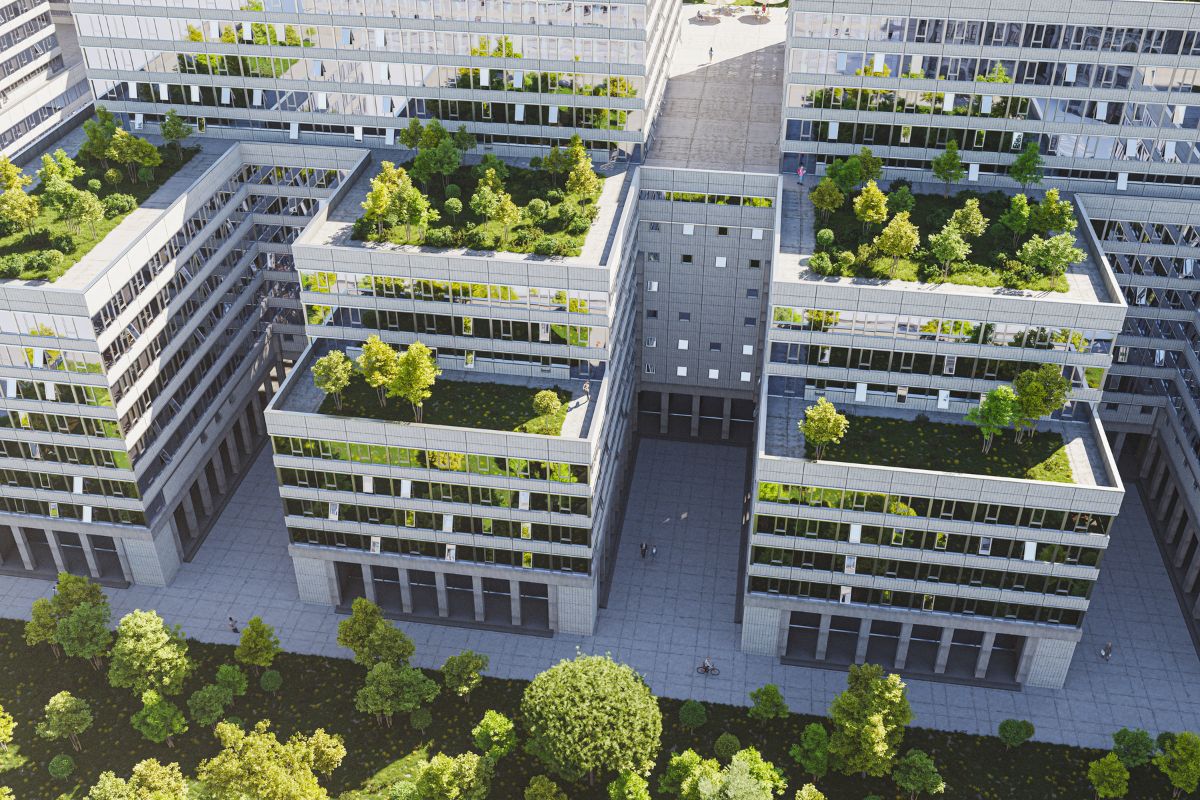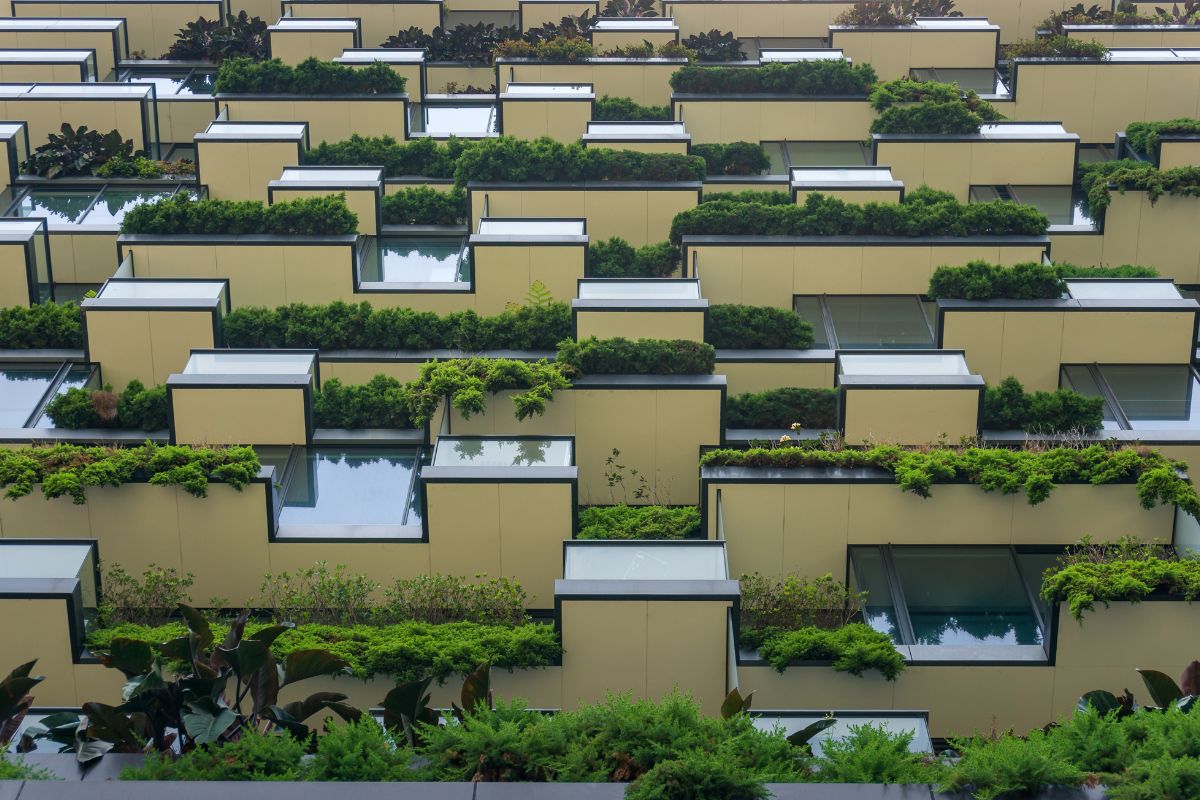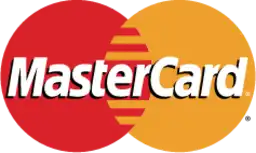In the world of modern construction, LEED certification shines as a symbol of green building. It’s especially important in the United Arab Emirates. By looking into LEED certification benefits, you’ll see how it helps meet global sustainability goals.
This green building certification boosts energy efficiency and protects the environment. It also meets the need for eco-friendly design and construction. In this guide, we’ll explore the many benefits of LEED certification. This will help pave the way for a greener future.
Introduction to LEED Certification
LEED certification is key for those in green building. The U.S. Green Building Council (USGBC) created it. It promotes sustainable building practices.
LEED focuses on energy use, saving resources, and better indoor air. It’s all about making buildings better for the planet.
LEED started in 1993, showing the need for green construction. It has grown, keeping up with new tech and methods. Now, it’s used worldwide, including in the UAE.
LEED is a way to measure how green a building is. It helps architects, builders, and owners make better buildings. By using LEED, you help the environment and get many benefits.
Understanding Sustainable Building Practices
Learning about sustainable building practices is key for those looking at LEED certification. These methods aim to save energy, cut down on waste, and use resources wisely. They are vital for good environmental design. By using eco-friendly architecture, you lessen harm to the environment and improve life for those living in your buildings.
To start using sustainable building practices, keep these principles in mind:
- Energy Efficiency: Use renewable energy, efficient gadgets, and smart designs to cut down on energy use.
- Resource Conservation: Choose materials that are green, recyclable, or made locally to save natural resources.
- Waste Reduction: Work on reducing waste in construction and encourage recycling at every stage.
- Indoor Air Quality: Focus on using safe materials and ensuring good air flow for a healthier space.
By following these principles, you help create eco-friendly buildings. These buildings are good for the environment and the health of those who live there. Using these practices meets LEED certification standards and shows a dedication to the future.
What is LEED Certification?
LEED certification is a way to check if buildings are good for the environment. The U.S. Green Building Council created the LEED rating system. It looks at how green a building is.
Buildings get a score from Certified to Platinum, showing how green they are. This score is based on how well they meet green standards.
When checking a building for LEED, several important areas are looked at. These include:
- Location and Transportation
- Sustainable Sites
- Water Efficiency
- Energy and Atmosphere
- Materials and Resources
- Indoor Environmental Quality
Each area is crucial for making sure buildings are sustainable. Knowing about LEED helps support green building efforts.
LEED Certification Benefits
Exploring the benefits of LEED certification can greatly influence your choice to get it. These perks go beyond just meeting standards. They improve how buildings are managed and the experience of those who use them.
Enhanced Energy Efficiency
LEED-certified buildings use much less energy than regular ones. They use smart insulation, energy-saving gadgets, and green energy. This cuts down energy use a lot.
Switching to these systems also lowers costs. It helps meet environmental goals.
Cost Savings Over Time
LEED certification brings big savings in the long run. Lower bills come from using less energy. This means more money saved over time.
Less maintenance is needed because of green materials and design. This adds to the savings.
Improved Indoor Air Quality
LEED certification also means better air inside. Better air systems, green materials, and more natural light make spaces healthier. This boosts well-being and productivity.
The LEED Certification Process
Getting LEED certification involves several steps. First, you register your project with the U.S. Green Building Council (USGBC). This is the beginning of your journey.
Then, you prepare documents that show your building’s green features. This includes energy use, air quality, and materials. Good documentation is key to success.
After that, LEED experts review your work. They give feedback that might need changes. How long this takes depends on your project’s details and needs.
Remember, there are fees for LEED certification. These cover registration, review, and any needed changes. It’s important to plan for these costs.
Working with authorized professionals can make things easier. They know LEED well and can help avoid problems early on.
With careful planning and detailed documentation, you can get LEED certification. This shows your building is green and sustainable.
Types of LEED Certifications Available
There are different LEED certifications for various construction and renovation projects. You can pick the one that suits your goals best. Knowing about these certifications is key to making your building design sustainable.
LEED for Building Design and Construction (BD+C)
LEED BD+C is for new buildings and big renovations. It covers many types of buildings, like commercial, residential, and institutional ones. It focuses on saving energy, conserving water, and using sustainable sites.
- Encourages resource-efficient building practices
- Promotes the use of renewable energy sources
- Enhances indoor environmental quality
LEED for Interior Design and Construction (ID+C)
LEED ID+C is for projects that involve changing interior spaces, like offices and stores. It aims to make indoor environments healthy and efficient. It looks at things like material choice, lighting, and furniture that support green living.
- Reduces energy consumption through efficient systems
- Implements sustainable furnishings and finishes
- Promotes occupant well-being in interior spaces
Environmental Benefits of LEED Certification
LEED certification is key in making buildings more sustainable. It focuses on using less energy and managing resources wisely. This makes LEED buildings good for the planet, pleasing both builders and users who care about the environment.
Reduction in Greenhouse Gas Emissions
LEED helps cut down greenhouse gas emissions. This is because LEED buildings use less energy. They often use solar power and have systems that save energy.
These buildings need less energy overall. They also encourage using energy wisely. This is good for the planet.
Conservation of Natural Resources
LEED also helps save natural resources. It does this by using water-saving devices and materials that are good for the environment. This way, LEED buildings use fewer resources.
These actions help the planet and support sustainable growth. They also make sure buildings don’t harm the environment too much.
The Importance of LEED-Certified Buildings
LEED is key in today’s building world. More people see the value in green buildings. LEED certified buildings show a commitment to the environment and new ideas.
In the UAE, following green building rules makes properties more attractive. Using LEED standards helps lower carbon emissions. It also draws in tenants who care about the planet.
- Reduction in long-term operational costs
- Increased tenant satisfaction and improved indoor environments
- Enhanced property marketability through sustainability credentials
Choosing LEED certification opens doors to government perks. You might get tax breaks or faster permits. This puts you ahead in the real estate game.
Market Value and LEED Certification
LEED certification greatly affects a property’s market value. Many tenants want buildings that are good for the environment. Knowing how this certification helps attract tenants is key for property owners.
Attracting Eco-Conscious Tenants
In today’s real estate, people want sustainable places to live and work. Properties with LEED certification draw in tenants who care about the planet. They look for energy savings, water use reduction, and less carbon emissions.
By offering these, your property stands out in a crowded market.
Increased Property Value
LEED certification boosts a property’s value. Research shows certified buildings sell or lease for more than non-certified ones. The higher price reflects the growing importance of being green.
Tenants are willing to pay extra for buildings that meet strict environmental standards. This shows the big benefits of going green.
Challenges of Obtaining LEED Certification
Getting LEED certification is tough for developers and builders. It’s because of the strict rules of sustainable building. These rules make the process harder.
One big problem is the complex certification process. It’s hard to understand and follow all the rules. You’ll need to document everything carefully and stick to strict guidelines. This can take a lot of time and resources.
The cost of LEED certification is also a big issue. Using green materials and systems costs a lot at first. But, the long-term benefits are worth it.
Working together helps solve these problems. Team up with experts who know the rules. Planning well can help you meet standards faster and avoid extra costs.
Final Thoughts
The LEED certification process offers many benefits for sustainable buildings in the UAE. It improves energy efficiency and indoor air quality. These advantages help the environment and also boost the economy in the future.
This guide showed how LEED helps manage resources better. It reduces greenhouse gas emissions and saves natural resources. These efforts not only lessen environmental harm but also increase your project’s value. This makes it more attractive to tenants who care about the planet.
Thinking about the benefits of LEED for your projects is important. Your dedication to green practices is key to a better future. By following these standards, you help create a more sustainable and strong built environment.















